 Most woodpeckers feel at home in trees where they build cavity nests and find food. Their favorite food is insects but they also like fruits and nuts. With a shade tree or two and plants that attract insects and/or produce fruits and nuts you can attract the woodpeckers that are native to your area. They need a secure perch in order to eat so will only be come to plants with hefty stems. Once they find your woodpecker haven they will stay for a long time. Most do not migrate so they will come in winter too, especially if you provide them with suet, nuts (and nut spreads like peanut butter), sunflower seeds, corn, and insect foods such as mealworms.
Most woodpeckers feel at home in trees where they build cavity nests and find food. Their favorite food is insects but they also like fruits and nuts. With a shade tree or two and plants that attract insects and/or produce fruits and nuts you can attract the woodpeckers that are native to your area. They need a secure perch in order to eat so will only be come to plants with hefty stems. Once they find your woodpecker haven they will stay for a long time. Most do not migrate so they will come in winter too, especially if you provide them with suet, nuts (and nut spreads like peanut butter), sunflower seeds, corn, and insect foods such as mealworms.
Here are some plants that woodpeckers are especially valuable for attracting woodpeckers.
 Oak (Quercus spp)
Oak (Quercus spp)
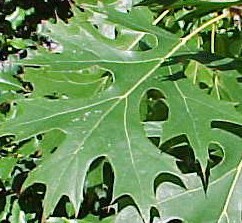 Any species or cultivar of these large deciduous trees will suffice. Woodpeckers enjoy the acorns, insects in the bark and potential for nesting sites. Many other birds such as warblers, vireos, tanagers, and grosbeaks enjoy the insects and nesting potential; titmice, nuthatches, and chickadees like the acorns.
Any species or cultivar of these large deciduous trees will suffice. Woodpeckers enjoy the acorns, insects in the bark and potential for nesting sites. Many other birds such as warblers, vireos, tanagers, and grosbeaks enjoy the insects and nesting potential; titmice, nuthatches, and chickadees like the acorns.
-
Size: Up to 80′ H; columnar forms available
Site: Depending on the species, sun to part sun; dry to moist well drained soil
Hardiness: Zones 4-10 depending on the species
 Apple and Crabapple (Malus spp)
Apple and Crabapple (Malus spp)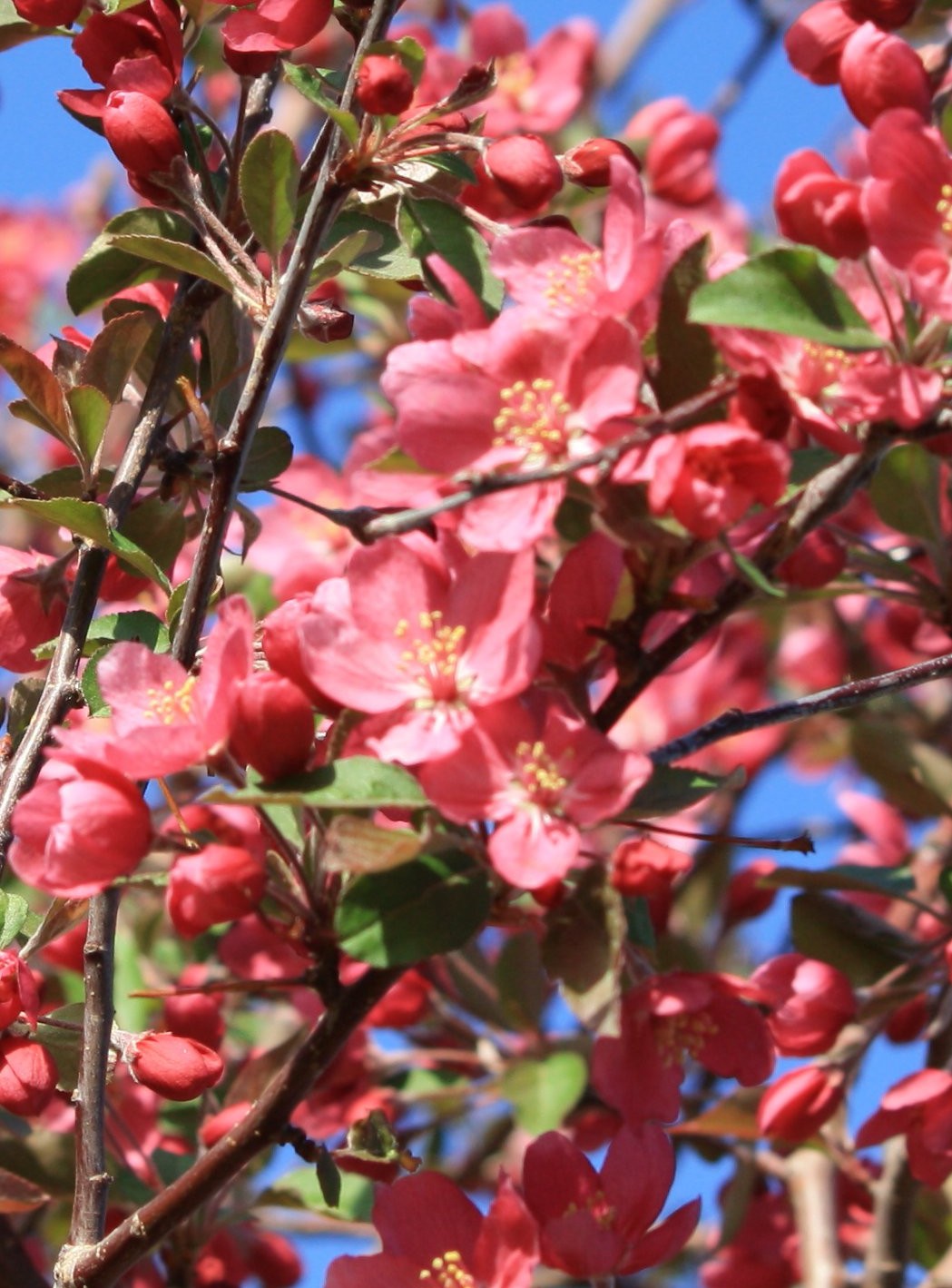
These small to medium sized trees are deciduous and produce a beautiful floral display in spring as well as fruit in the fall. Woodpeckers are attracted to the insects that visit the flowers and enjoy the fruits in the fall. Choose crabapple cultivars such as ‘Arnold’, ‘Bob White’, ‘Donald Wyman’, that hang on to their fruits into winter. Warblers, vireos, tanagers, and orioles are also attracted to the insects, while finches, jays, and thrushes enjoy the fruits especially in winter. Bluebirds, red-eyed vireo, American robin and great crested flycatcher may use these trees for nesting sites.
-
Size: 8-50′ H depending on the variety
Site: Full sun; moist, well-drained soil
Hardiness: Zones 4-8
 Virginia creeper (Parthenocissus quinquefolia)
Virginia creeper (Parthenocissus quinquefolia)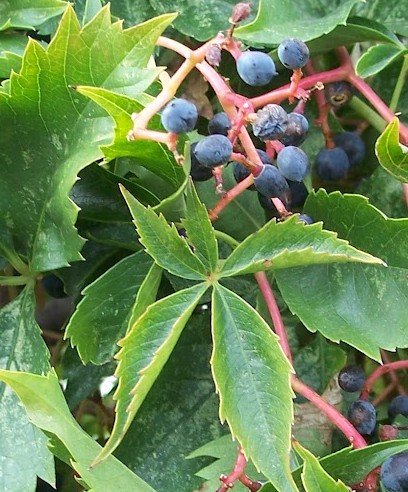
This deciduous vine should be given a sturdy support so the woodpeckers can easily get the blue berries. The vine has striking crimson red fall coloring to add to the garden and will grow over trees and walls by adhesive discs at the ends of its tendrils if allowed. Thrushes, grosbeaks, and over thirty other birds enjoy the berries in the fall.
-
Size: 30-50′ long
Site: Full sun to part shade; medium moist, well-drained soil
Hardiness: Zones 3-9
 Staghorn Sumac (Rhus typhina)
Staghorn Sumac (Rhus typhina)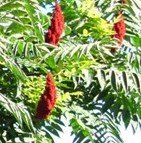
A native of eastern North American, this deciduous shrub is single or multi-stemmed. It grows about three feet a year eventually forming a large circular clone. The plants are attractive for both their vivid red fall coloring and fuzzy clusters of small berries that persist into winter. The berries are enjoyed by at least twenty one bird species including woodpeckers and bluebirds.
-
Size: 10-12′ H
Site: Full sun to part shade; dry to medium, well-drained soil
Hardiness: Zones 3-8
 Saw Palmetto (Serenoa repens)
Saw Palmetto (Serenoa repens)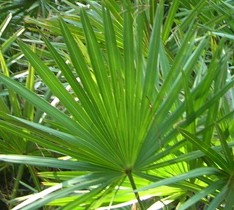
For those in the Southeast this native evergreen multi-trunked shrub provides a great food source for woodpeckers as well as many other birds. It is a small palm with a sprawling trunk and fans of leaves each with about twenty leaflets. Although the plants are very slow growing they are very long lived and form substantial clumps. The berries are attractive to woodpeckers as well as wild turkeys and quail. Warblers, vireos and many other birds eat the insects that are found around the flowers.
-
Size: 6′ H
Site: Prefers full sun but tolerates shade; drought tolerant one established
Hardiness: Zones 9-10
